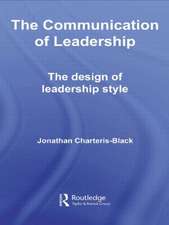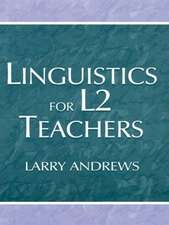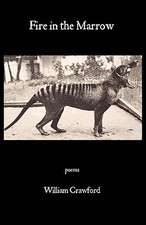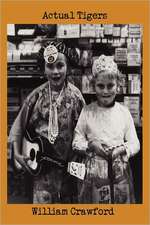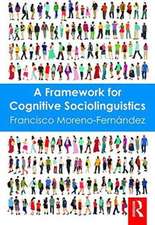Doing Corpus Linguistics
Autor Eniko Csomay, William J. Crawforden Limba Engleză Paperback – 28 feb 2024
This second edition has been thoroughly revised and updated with fresh exercises, examples, and references, as well as an extensive list of English corpora around the world. It also provides more clarity around the approach used in the book, contains new sections on how to identify patterns in texts, and now covers Cohen’s statistical method.
This practical and applied text emphasizes hands-on experience with performing language analysis research and interpreting findings in a meaningful and engaging way. Readers are given multiple opportunities to analyze language data by completing smaller tasks and corpus projects using publicly available corpora. The book also takes readers through the process of building a specialized corpus designed to answer a specific research question and offers detailed information on completing a final research project that includes both a written paper and an oral presentation of the reader’s specific research projects.
Doing Corpus Linguistics provides students in applied linguistics and TESOL with the opportunity to gain proficiency in the technical and interpretive aspects of corpus research and to encourage them to participate in the growing field of corpus linguistics.
| Toate formatele și edițiile | Preț | Express |
|---|---|---|
| Paperback (2) | 301.88 lei 22-36 zile | +15.35 lei 5-11 zile |
| Taylor & Francis – 28 feb 2024 | 301.88 lei 22-36 zile | +15.35 lei 5-11 zile |
| Taylor & Francis – 5 oct 2015 | 353.12 lei 22-36 zile | +9.86 lei 5-11 zile |
| Hardback (2) | 1000.27 lei 43-57 zile | |
| Taylor & Francis – 28 feb 2024 | 1000.27 lei 43-57 zile | |
| Taylor & Francis – 14 oct 2015 | 1161.28 lei 43-57 zile |
Preț: 301.88 lei
Nou
Puncte Express: 453
Preț estimativ în valută:
57.76€ • 60.47$ • 47.80£
57.76€ • 60.47$ • 47.80£
Carte disponibilă
Livrare economică 17-31 martie
Livrare express 28 februarie-06 martie pentru 25.34 lei
Preluare comenzi: 021 569.72.76
Specificații
ISBN-13: 9781032414713
ISBN-10: 1032414715
Pagini: 190
Ilustrații: 44 Tables, black and white; 5 Line drawings, black and white; 31 Halftones, black and white; 36 Illustrations, black and white
Dimensiuni: 152 x 229 x 12 mm
Greutate: 0.26 kg
Ediția:2 ed
Editura: Taylor & Francis
Colecția Routledge
Locul publicării:Oxford, United Kingdom
ISBN-10: 1032414715
Pagini: 190
Ilustrații: 44 Tables, black and white; 5 Line drawings, black and white; 31 Halftones, black and white; 36 Illustrations, black and white
Dimensiuni: 152 x 229 x 12 mm
Greutate: 0.26 kg
Ediția:2 ed
Editura: Taylor & Francis
Colecția Routledge
Locul publicării:Oxford, United Kingdom
Public țintă
PostgraduateNotă biografică
Eniko Csomay is a Professor in the Department of Linguistics and Asian/Middle Eastern Languages at San Diego State University, USA.
William J. Crawford is a Professor in the Department of English at Northern Arizona University, USA.
William J. Crawford is a Professor in the Department of English at Northern Arizona University, USA.
Cuprins
List of Tables
List of Figures
Preface
Acknowledgments
PART I
Introduction to Doing Corpus Linguistics and Register Analysis
1 Linguistics, Corpus Linguistics, and Language Variation
1.1 Language and Rules/Systems
1.2 What Is Corpus Linguistics?
1.3 Register, Genre, and Style – Is There a Difference?
1.4 Outline of the Book
2 Register (Functional) Approach to Language Analysis
2.1 Why Register?
2.2 What Is a Register (Functional) Analysis?
2.3 Describing Situational Characteristics and Identifying Variables
2.4 Providing a Functional Interpretation
2.5 Units of Analysis and Register Studies
2.6 End of Chapter Exercises
PART II
Searches in Available Corpora
3 Searching a Corpus
3.1 Words
3.2 Collocates
3.3 N-Grams
3.4 POS Tags
4 Projects Using Publicly Available Corpora
4.1 Word- and Phrase-Based Projects
4.2 Grammar-Based Projects
PART III
Building Your Own Corpus, Analyzing Your Quantitative Results, and Making Sense of Data
5 Building Your Own Corpus
5.1 Do-It-Yourself Corpora
5.2 Deciding on a Corpus Project
5.3 Building a Corpus
5.4 Software Programs and Your Corpus
6 Basic Statistics
6.1 Why Do Statistical Analyses?
6.2 Basic Terms, Concepts, and Assumptions
6.3 How to Go About Getting the Statistical Results
6.4 End of Chapter Exercises
7 Statistical Tests (ANOVAs, Chi-square, Pearson Correlation)
7.1 Difference Tests
7.2 Relationship Tests
7.3 How to Go About Getting the Statistical Results
7.4 Effect Size
7.5 End of Chapter Exercises
8 Doing Corpus Linguistics
8.1 Doing a Register Analysis of Your Project
8.2 Situational Analysis
8.3 Linguistic Analysis
8.4 Functional Interpretation
8.5 Reporting on Your Project
9 A Way Forward
Available Corpora
Index
List of Figures
Preface
Acknowledgments
PART I
Introduction to Doing Corpus Linguistics and Register Analysis
1 Linguistics, Corpus Linguistics, and Language Variation
1.1 Language and Rules/Systems
1.2 What Is Corpus Linguistics?
1.3 Register, Genre, and Style – Is There a Difference?
1.4 Outline of the Book
2 Register (Functional) Approach to Language Analysis
2.1 Why Register?
2.2 What Is a Register (Functional) Analysis?
2.3 Describing Situational Characteristics and Identifying Variables
2.4 Providing a Functional Interpretation
2.5 Units of Analysis and Register Studies
2.6 End of Chapter Exercises
PART II
Searches in Available Corpora
3 Searching a Corpus
3.1 Words
3.2 Collocates
3.3 N-Grams
3.4 POS Tags
4 Projects Using Publicly Available Corpora
4.1 Word- and Phrase-Based Projects
4.2 Grammar-Based Projects
PART III
Building Your Own Corpus, Analyzing Your Quantitative Results, and Making Sense of Data
5 Building Your Own Corpus
5.1 Do-It-Yourself Corpora
5.2 Deciding on a Corpus Project
5.3 Building a Corpus
5.4 Software Programs and Your Corpus
6 Basic Statistics
6.1 Why Do Statistical Analyses?
6.2 Basic Terms, Concepts, and Assumptions
6.3 How to Go About Getting the Statistical Results
6.4 End of Chapter Exercises
7 Statistical Tests (ANOVAs, Chi-square, Pearson Correlation)
7.1 Difference Tests
7.2 Relationship Tests
7.3 How to Go About Getting the Statistical Results
7.4 Effect Size
7.5 End of Chapter Exercises
8 Doing Corpus Linguistics
8.1 Doing a Register Analysis of Your Project
8.2 Situational Analysis
8.3 Linguistic Analysis
8.4 Functional Interpretation
8.5 Reporting on Your Project
9 A Way Forward
Available Corpora
Index
Descriere
Doing Corpus Linguistics offers a practical step-by-step introduction to corpus linguistics, making use of widely available corpora and a register analysis-based theoretical framework to provide applied linguistics and TESOL students with the understanding and skills to analyze corpora and carry out successful corpus-based research.




